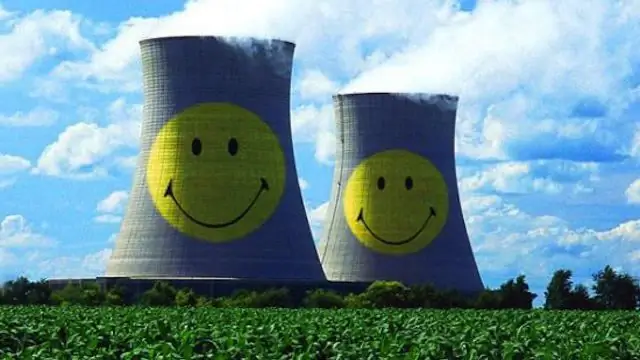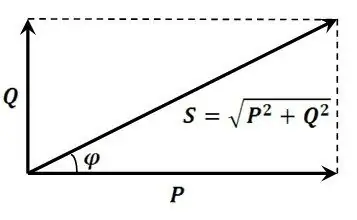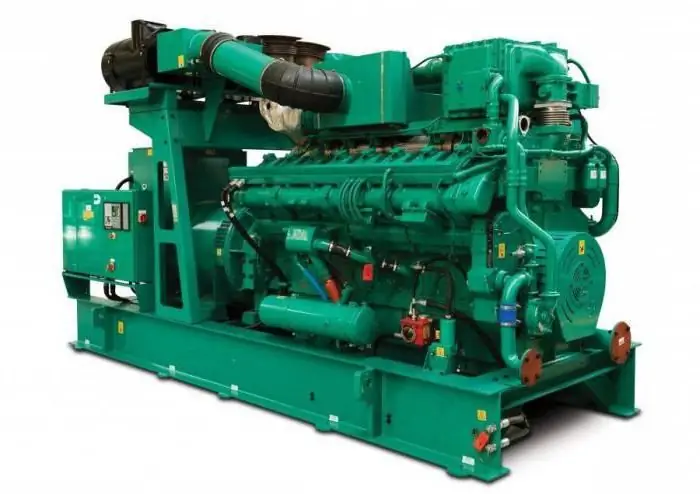2026 Author: Howard Calhoun | [email protected]. Last modified: 2025-01-24 13:10:41
Kureiskaya HPP is located in the Turukhansky district of the Krasnoyarsk Territory, near the village of Svetlogorsk. The station units rotate the waters of the Kureika River, the right tributary of the Yenisei. The power plant is part of the Kureisky cascade, and, being the second polar hydroelectric power plant in the region after the Ust-Khantaiskaya, it supplies energy to the Norilsk Metallurgical Plant and part of the Dudinsky and Igarsky districts.

Construction history
Kureiskaya HPP turned out to be one of the latest energy facilities built during the Soviet era. After the collapse of the Soviet Union, construction was suspended due to lack of funding. Work resumed only in the early 1990s. The final acceptance by the State Commission and the commissioning of the Kureyskaya HPP took place only on December 11, 2002. The launch of the power plant made it possible to eliminate the shortage of electricity and give impetus to the development of industry in the Krasnoyarsk Territory.

The first brigade of 19 builders landed on the banks of the Kureika River on June 4, 1975. Since then, this date has been officially called the day of the start of the construction of the Kurey hydroelectric power station. The first powerful explosion that took out 15000cubic meters of rock on the way to the construction tunnel, sounded in April 1980, and in July 1982, the construction tunnel was cut at the main stages of construction. The laying of concrete in the main structures of the hydroelectric complex of the Kureyskaya HPP began in August 1983, the course of the Kureyka was blocked in July 1985. The construction of the dam continued from 1984 to 1990, but despite this, the 1st hydroelectric unit of the station was launched in December 1987.

Construction accident
Supposedly, the lack of funds caused insufficient quality of work, and on July 26, 1992, the channel section of the dam broke through, resulting in the removal of a large amount of soil, the appearance of longitudinal cracks on the downstream slope and the formation of a funnel, subsidence of the upper slope.
By the beginning of the next year's flood, the dam had been strengthened, including the injection of cement-clay mortars, topping up the soil and building a drainage prism. These measures required incredible efforts, but were of a temporary and auxiliary nature. The dam was in need of serious and costly repairs. The damage caused by the breakthrough made it possible to launch the last, 5th hydroelectric unit only in 1994. Repair work and elimination of imperfections continued for another 8 years.

Design features of the Kureyskaya HPP
Kureiskaya HPP was built according to a unique project. The hydroelectric complex of the station includes the central channel, right-bank and left-banksections of the dam. The total length of all dams along the crest is approximately 4500 meters, the maximum height of the channel dam is 79 meters. A surface spillway 168 meters long and 76 meters wide, designed to drain excess flood water past the turbine wheels, is located directly in the rocky excavation of the left bank.

The dam forms a reservoir bowl with a normal retaining level of 95 meters, a volume of 9.96 cubic meters. kilometers and a mirror area of 558 sq. kilometers. Water flows through 5 deep holes into the water intake and enters pressure conduits, each of which is 7 meters in diameter and 130 meters long. Concrete conduits direct the flow from the reservoir to the turbine blades. After that, through the suction pipes, the water goes into the outlet channel, which has a width of 101 and a length of 170 meters.
The power plant building is also unusual. It is located in a recess, and its zero mark is at a depth of more than 80 meters. The turbines of the station are located at the 32-meter mark, and the generators are located at the 35-meter mark. The power plant is equipped with 5 radial-axial turbines and synchronous generators with a capacity of 120 MW. The total projected generation of energy by the hydroelectric units of the Kureyskaya HPP is 600 MW.
During the construction of the station's dam, for the first time in the country, the technique of using rolled low-cement hard concrete was used. Here, methods for harvesting and laying clay soils at sub-zero temperatures and methods for preparing the foundation of soil dams on lacustrine-glacial deposits withoutdraining the pit.

Svetlogorsk and its inhabitants
The settlement of Svetlogorsk was founded simultaneously with the start of construction of the Kureyskaya hydroelectric power station. Today there are about 1200 inhabitants here - they are power engineers and their families. Population peaked at the time of construction - almost 8,500 people lived and worked here.
Svetlogorsk and Kureyskaya HPP are reliably connected with the mainland. The village airport has a hard surface and is able to receive aircraft all year round. The auxiliary farm of the power plant provides residents with fresh products, the village has a hospital equipped according to modern requirements and a club with a hall for 530 seats. But despite the relatively well-equipped life, people leave here because they do not see further prospects.
Nevertheless, the station continues to generate the necessary energy, according to design calculations, and even a cursory glance at the photo of the Kureyskaya HPP awakens respect for the talent of engineers and the dedication of builders.
Recommended:
Nuclear power plants. Nuclear power plants of Ukraine. Nuclear power plants in Russia

Modern energy needs of mankind are growing at a gigantic pace. Its consumption for lighting cities, for industrial and other needs of the national economy is increasing. Accordingly, more and more soot from burning coal and fuel oil is emitted into the atmosphere, and the greenhouse effect increases. In addition, there has been more and more talk in recent years about the introduction of electric vehicles, which will also contribute to the increase in electricity consumption
What is reactive power? Reactive power compensation. Reactive power calculation

In real production conditions, reactive power of an inductive nature prevails. The enterprises install not one electric meter, but two, one of which is active. And for the overexpenditure of energy “chased” in vain through power lines, the relevant authorities are mercilessly fined
Gas piston power plant: the principle of operation. Operation and maintenance of gas piston power plants

Gas piston power plant is used as a main or backup source of energy. The device requires access to any type of combustible gas to operate. Many GPES models can additionally generate heat for heating and cold for ventilation systems, warehouses, industrial facilities
Floating nuclear power plant "Akademik Lomonosov". Floating nuclear power plant "Northern Lights"

A new word in the use of peaceful atom - a floating nuclear power plant - innovations of Russian designers. In the world today, such projects are the most promising for providing electricity to settlements for which local resources are not enough. And these are offshore developments in the Arctic, and the Far East, and Crimea. The floating nuclear power plant, which is being built at the B altic Shipyard, is already attracting great interest from domestic and foreign investors
What is a unique payment identifier? How to find out the unique payment identifier?

Unique payment identifier - what is it? What is it for? These are the most common questions that entrepreneurs ask when paying taxes at a bank, when a bank employee requires you to specify this requisite. This is bewildering. Where can I find it, how to get it and can I do without it? Thus, a tool created to simplify the procedure has led to new questions that need to be clarified

